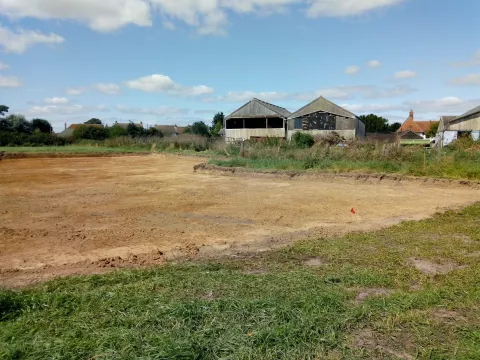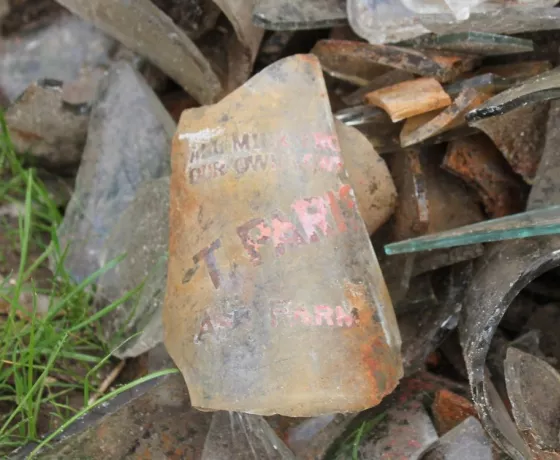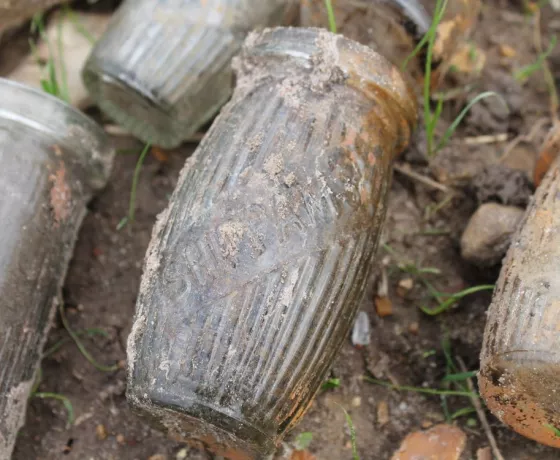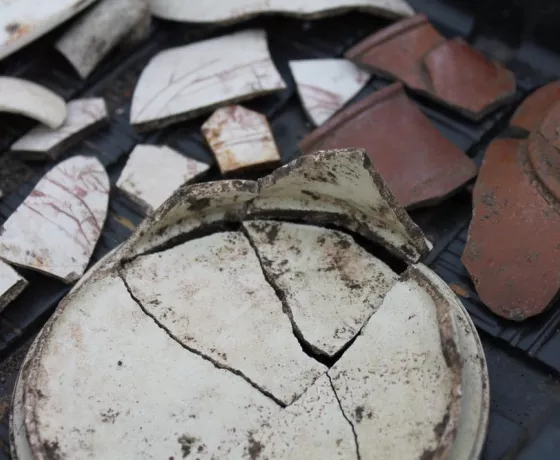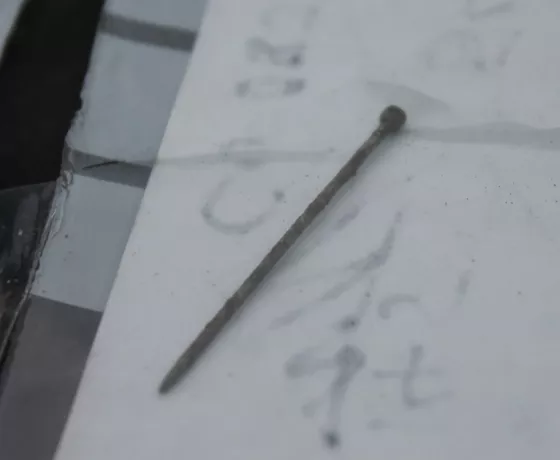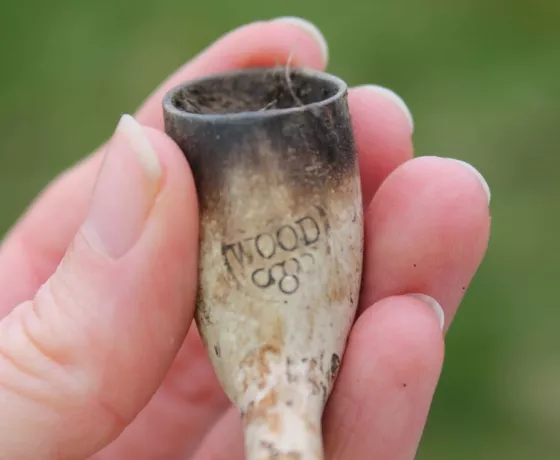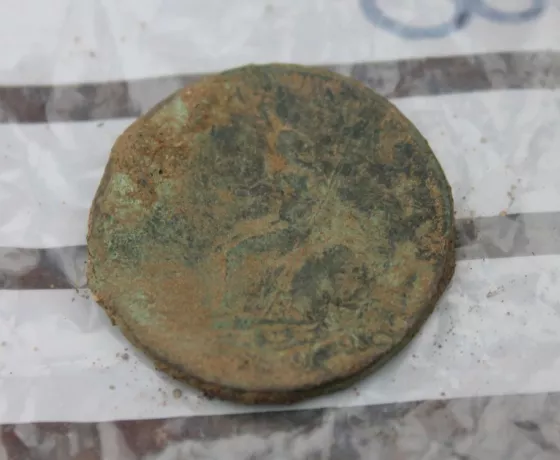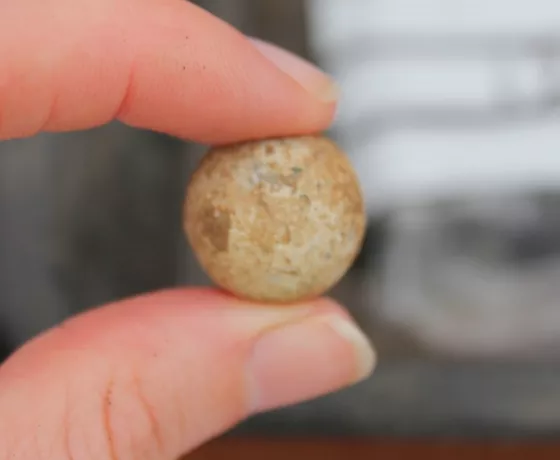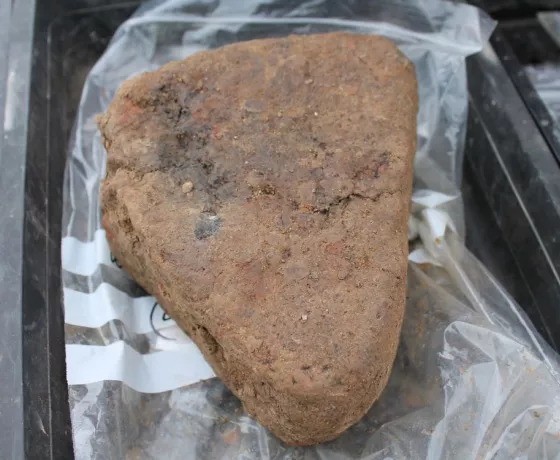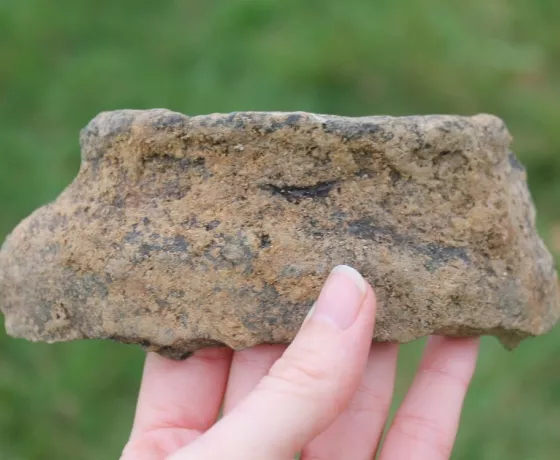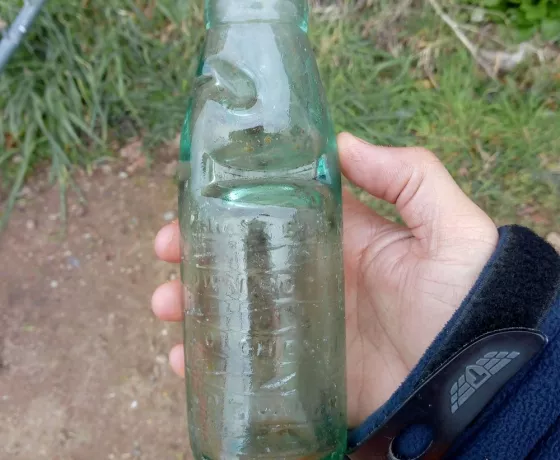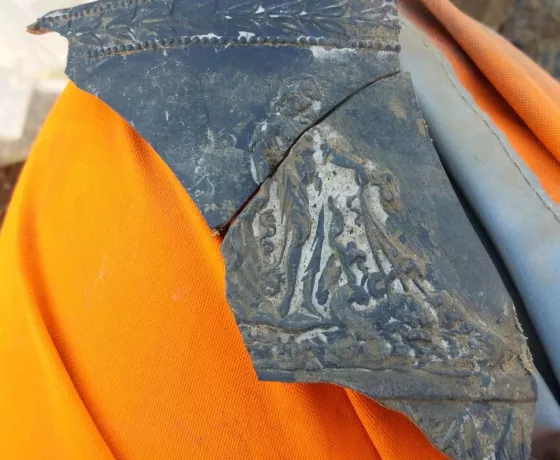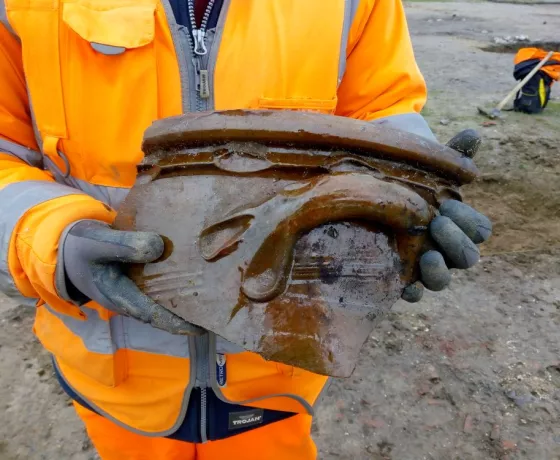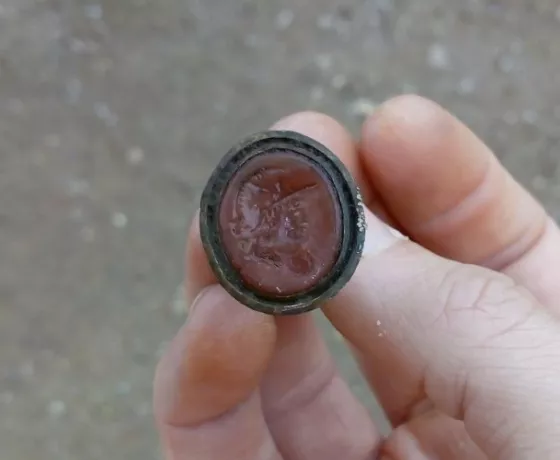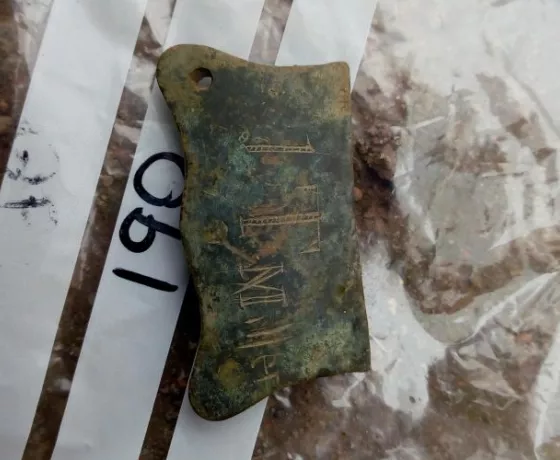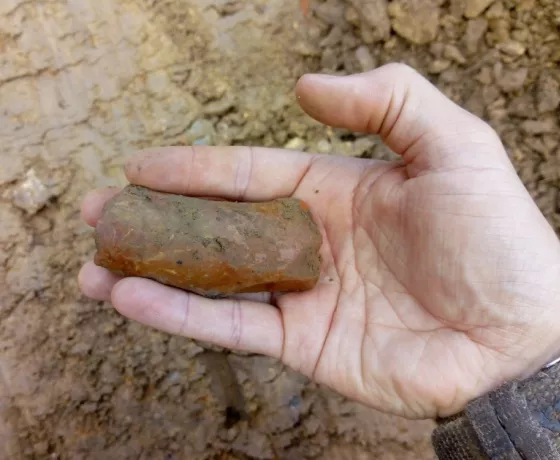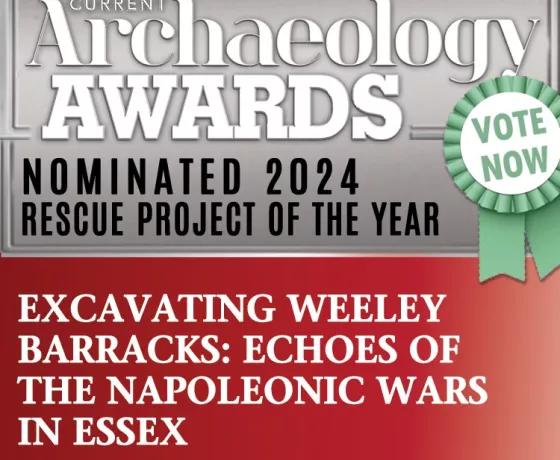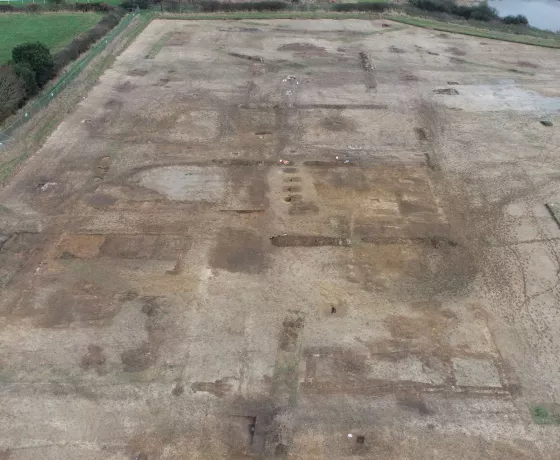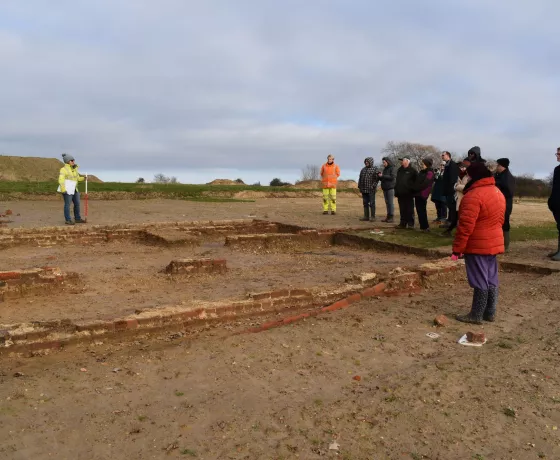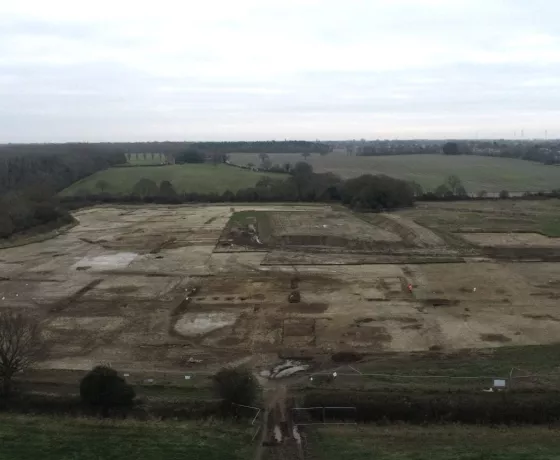Between August 2021 and February 2022, a team of professional archaeologists investigated the fields south of Thorpe Road in Weeley, Essex. From prehistoric pits to a Napoleonic war military camp, this site had lots to reveal and we posted regular updates on this blog.
Our finds...
Military Button
This button is associated with the 5th Dragoon Guards and dates to c.1788-96. Around the outside of the button is the regimental motto VESTIGIA NULLA RETRORSUM (Never a Step Backwards/We Do Not Retreat) with a crown at the top, above a Hannover Horse with the (now barely legible) letters V D G (5th Dragoon Guards) below. The button was probably silvered rather than gilded, but no trace now remains, while the relatively small size (16mm diameter) suggests it may have been a cuff button. The 5th Dragoon Guards wore red coats very similar to the infantry, with green facings. Records from the Parish Register at Weeley indicate that the 5th Dragoon Guards were at the barracks between May 1809 and May 1811 (https://essexandsuffolksurnames.co.uk/history/regiments-at-weeley-barracks).
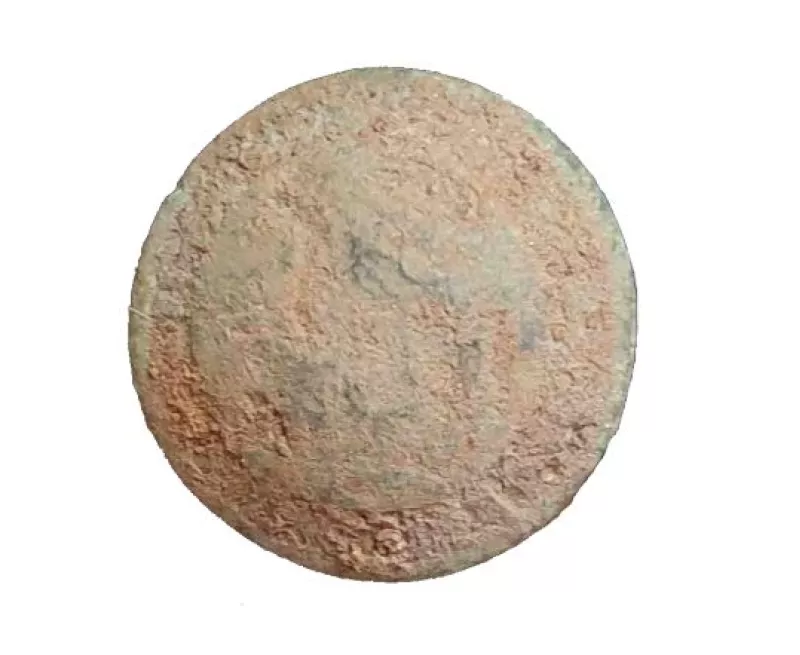
Gun Flint
This is one of four gunflints recovered from various locations across the site. All flints were 1” to 1” 1/8th suggesting they are all smooth bore ‘Brown Bess’ musket or carbine flints. Two of the flints are smaller suggesting they may be carbine flints used by the Light Dragoons. The high quality material and method of manufacture suggest they were made at Brandon, the centre of the British flint knapping industry during the revolutionary and Napoleonic wars.
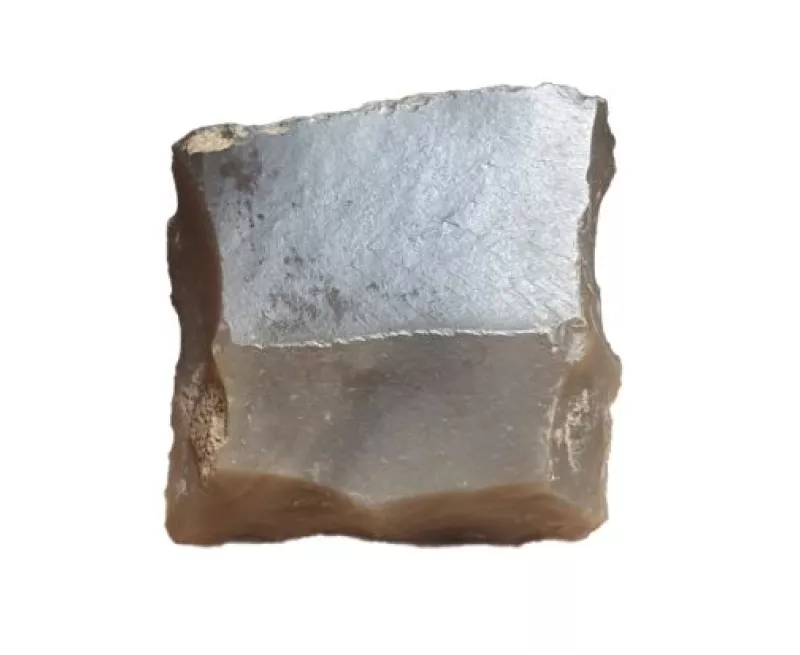
Browse more of the finds...
Meet the team
Louise has worked in commercial archaeology since 2005. She has a BA in Ancient History and Archaeology and an MA in Practical Archaeology from the University of Birmingham. In her current role, Louise coordinates large-scale complex evaluations and excavations, along with associated post-excavation publication. She also undertakes Desk-based Assessments and Heritage Impact Assessments. Further to this, she is an archaeological surveyor, and experienced in graphics and geomatics. Louise has a particular interest in British prehistory. She has worked extensively across East Anglia and the East Midlands and has a broad knowledge of the historic environment. She is a Member of the Chartered Institute for Archaeologists (MCIfA).
Nick graduated from the University of Bradford in 2008 with a BSc in Archaeology and has since worked for a number of archaeological units in the south and east of England. He joined OA East in 2011, and has subsequently worked on a broad range of sites and periods throughout East Anglia, including the Great Fen Spitfire project. His current role involves directing excavation on site and writing reports in the post-excavation phase, recent work has included large excavations of Iron Age and Roman activity in Essex and large and small evaluations throughout Cambridgeshire.
Clemency develops and supports all educational and community work across Oxford Archaeology involving volunteers, educational institutions and the general public. She is a member of the company-wide Communications Team and promotes wellbeing at work initiatives as a Mental Health First Aider. Previously, Clem was the Outreach Officer for a Heritage Lottery Funded project to recruit and train volunteers for the Portable Antiquities Scheme based at the British Museum and, before that, she worked for Access Cambridge Archaeology, running archaeological outreach activities for schools and community groups in East Anglia from the University of Cambridge.
Nick has more than 25 years professional experience within the historic environment sector in the UK. He has a BA (Hons) and a PhD in Archaeology, both awarded by the Institute of Archaeology, University College London. He is a director within the largest team of historic environment consultants in the UK, and has considerable experience of providing heritage consultancy advice on housing schemes, employment schemes, road and rail projects, gas and water pipelines, wind and solar farms, as well as on nationally significant infrastructure projects. His role on the project is to ensure that the work on the project is undertaken to a high standard, and to liaise with the archaeological advisor to Tendring District Council.
Browse the blog
Project client


